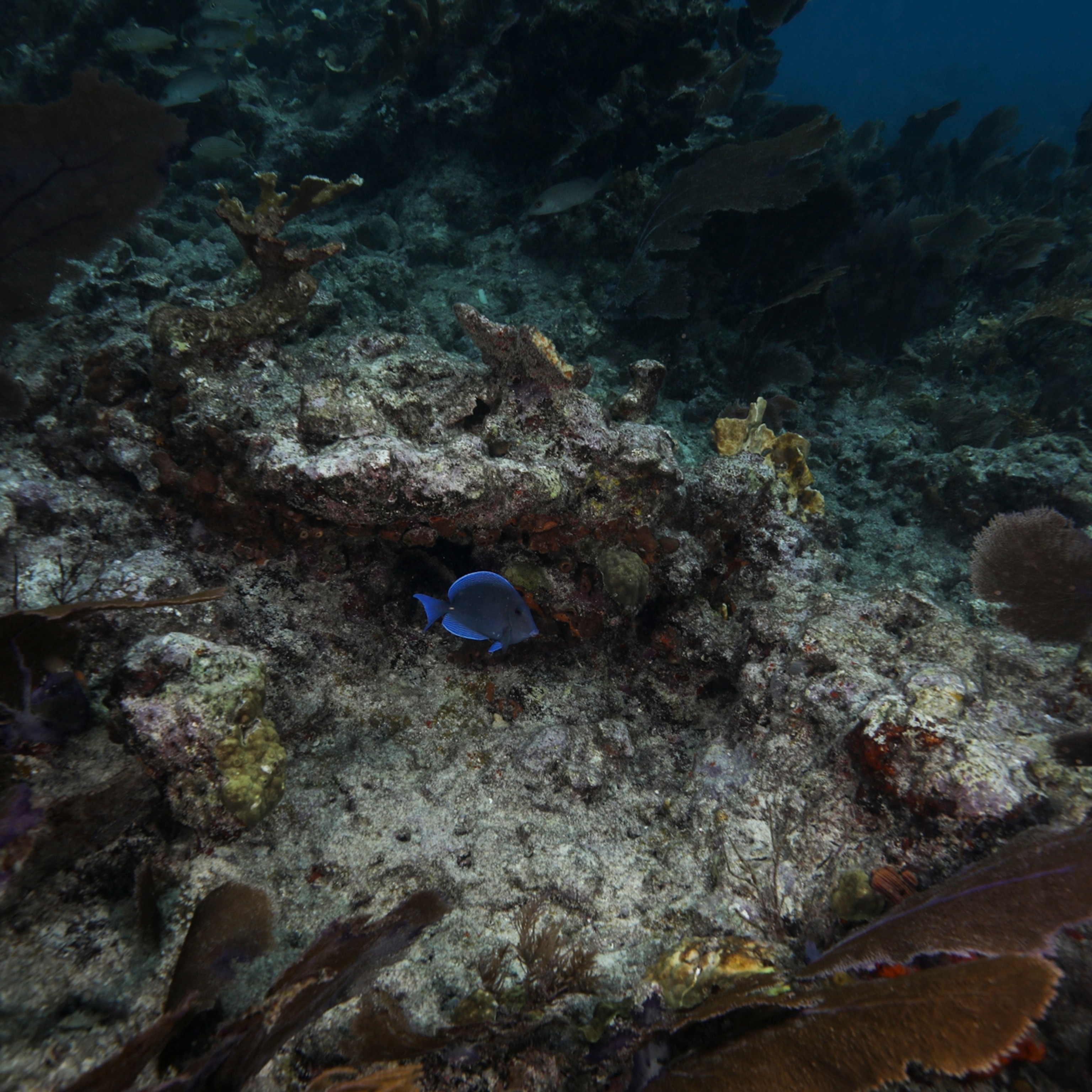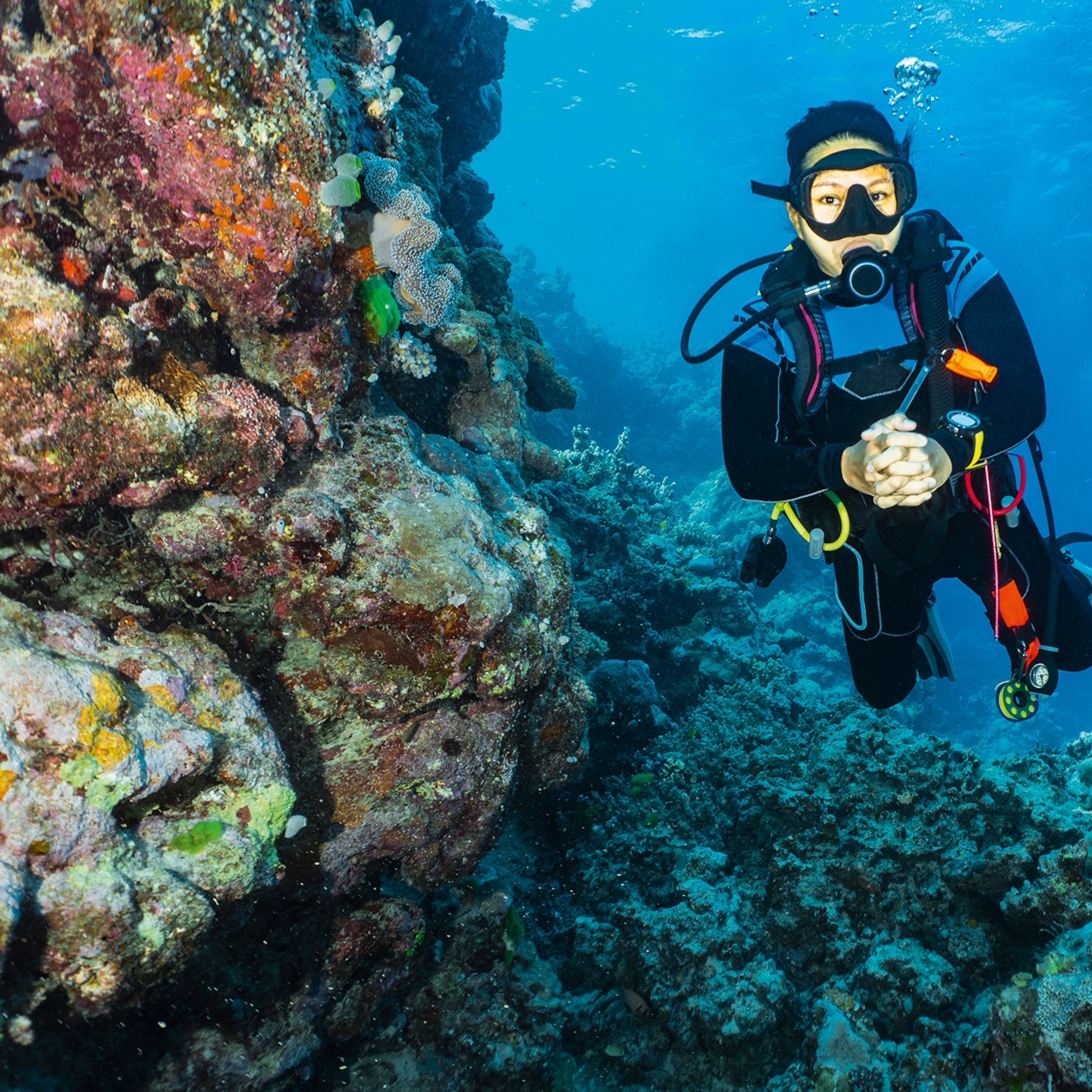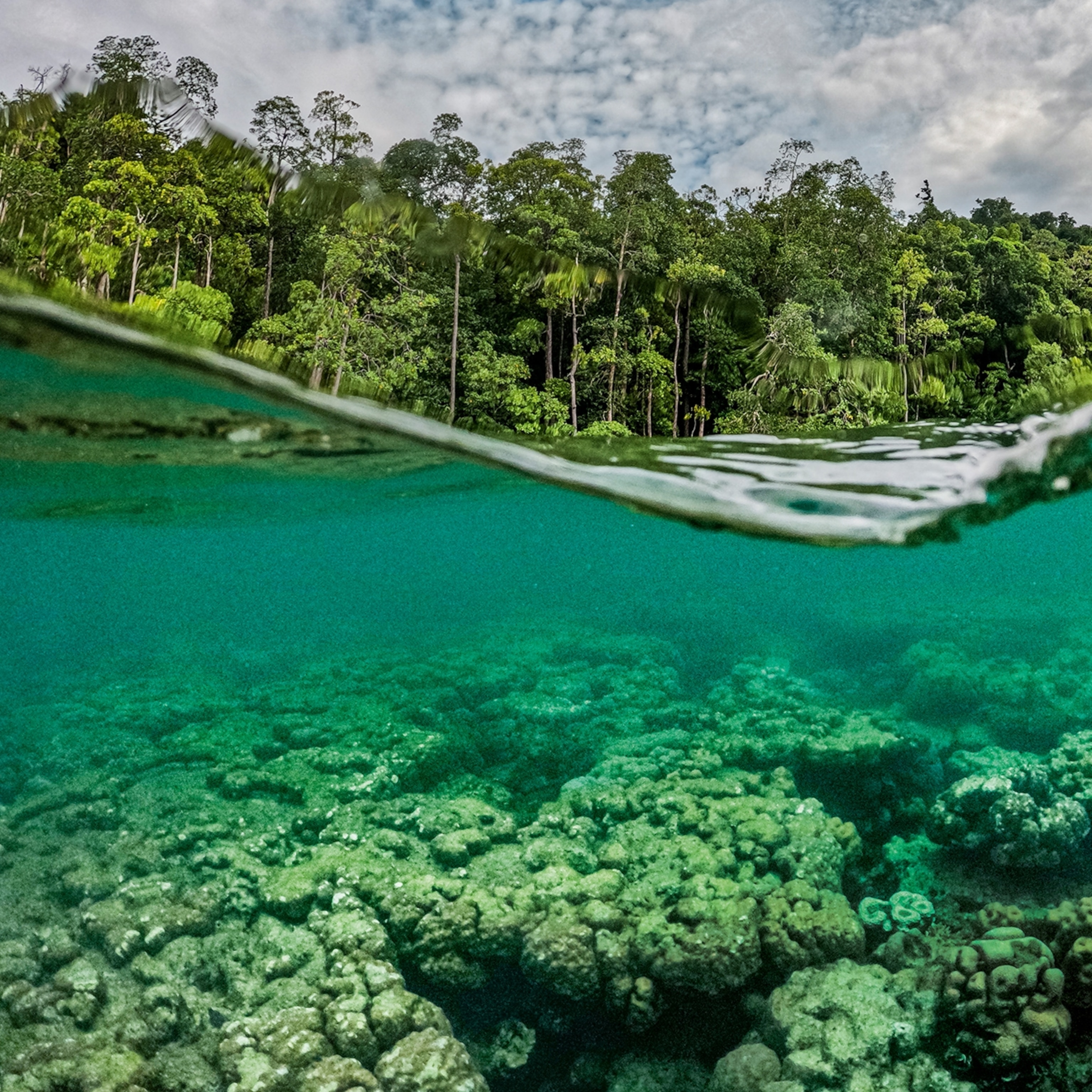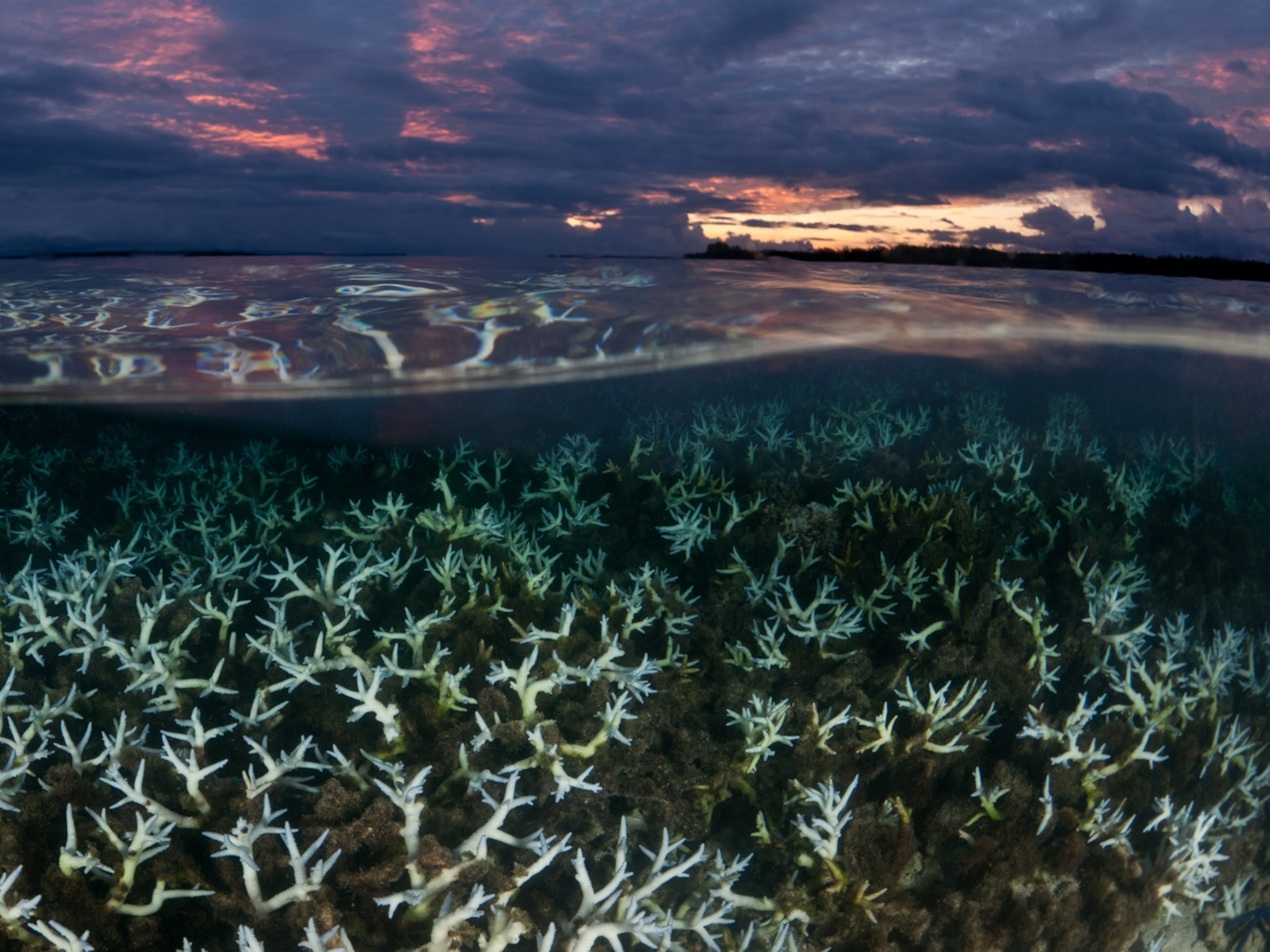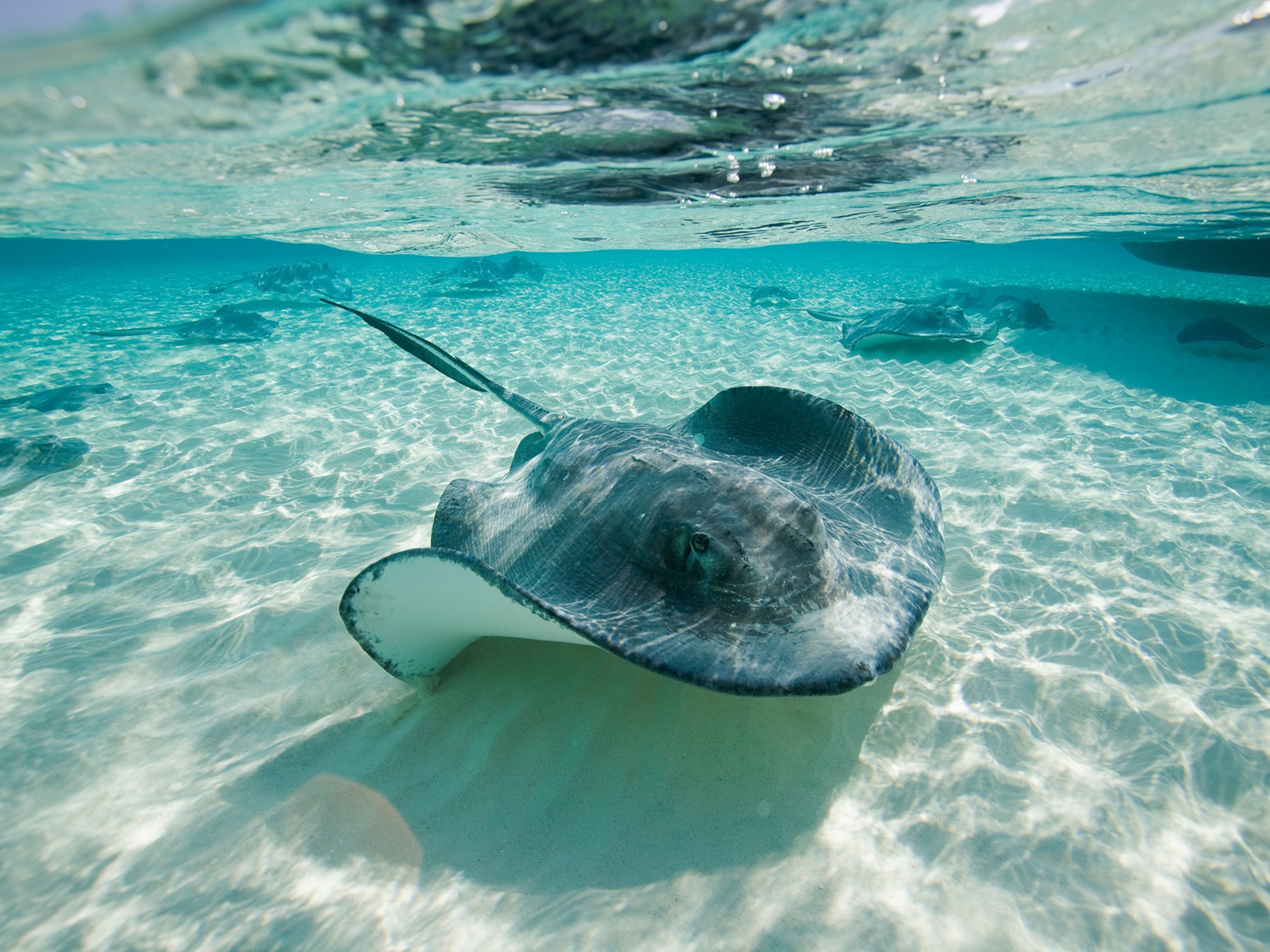
Why scientists are 'weeding' coral reefs
Climate change is threatening the world’s corals, but removing seaweed—like weeding a garden—can give some reefs a boost.
Off the coast of northeastern Queensland, Australia, near Magnetic Island in Florence Bay, the Great Barrier Reef corals are having a baby boom.
“Every year there are more and more coral babies,” says Hillary Smith, a National Geographic explorer and ecologist at James Cook University in Australia.
That’s thanks to a simple but effective strategy for cleaning the region’s coral reefs: “seaweeding.” Like weeding a garden, seaweeding involves plucking big handfuls of large algae—sargassum seaweed in this case—off reefs and hauling them away.
When weeds grow in garden soil, they can take more than their fair share of water and sunlight stunting the growth of flowers. Coral reefs, worn down by human activities such as pollution and hot ocean temperatures, can similarly be overtaken by seaweed that makes it harder for the corals to thrive.
Experts say getting climate change under control is the ultimate prescription for keeping the world’s reefs healthy. But meanwhile, local restoration efforts such as seaweeding can help give corals a boost. And while it would take nothing short of a small army of citizen scientists to clean all the reefs that need it, research shows there’s potential in scaling the cleaning efforts to local coastal communities that may rely on healthy reefs for tourism and fishing, Smith says.
Smith and her colleagues recently published their research in the journal Restoration Ecology. Among their encouraging findings, the researchers determined that cleaning the corals on the Great Barrier Reef resulted in a threefold increase in the number of new coral babies, known as recruits, in both 2019 and 2020.
The health of coral reefs around the world is dire. By 2050, 95 percent of the world’s coral could experience heat stress, according to a 2020 report by the Coral Reef Monitoring Network. Algae is a big problem: Already, algae cover has increased on two-thirds of reefs around the world, and one study published in 2021 estimated that half the world’s coral have died since the 1950s. Removing seaweed from reefs is labor intensive but not complicated, making it an ideal project for citizen scientists eager to help restore degraded reefs.
“We’re really optimistic about this type of initiative,” says Fiona Wilson, CEO of environmental citizen science group Earthwatch Institute, whose volunteers have helped remove seaweed. “This is a really viable and low-tech way to support reef recovery, and that’s really exciting for reefs around the world.”
In addition, Wilson sees citizen science as a powerful tool to help combat climate anxiety and despair.
“We’re connecting people to the critical issue of our time—climate change,” she says. “Action is the antidote to this almost existential crisis.”
Like weeding a garden
Magnetic Island—nicknamed Maggie—is 19 square miles of island national park, floating in the Coral Sea five miles from the coast of Queensland. Across from Maggie on the mainland sits the city of Townsville, at the end of a river and home to a major port. Throughout the 20th century, human development and pollution in run-off have created underwater conditions in the area more hospitable to robust seaweed than fragile coral.
Today, continued pollution and warming waters caused by climate change remain a chronic source of stress for the ecosystem, and the reefs at Magnetic Island have been classified as some of the most damaged in the Great Barrier Reef system, Smith says. Yet given their location, they’re also some of the most accessible reefs in the system.
As coral cover declined over the years, a species of seaweed called Sargassum, which forms a thick, brown jungle of seaweed cover, had settled over former reefs, making it challenging for coral to reproduce and grow.
“If you go diving on the reef, it’s almost like a kelp forest,” says Smith. “It’s huge.”
When seaweed cover is thick, little swimming coral larvae may struggle to navigate the underwater canopy to find a home on the reef, she says. Those that do manage to settle may then be too shaded to grow well, be scratched away by floating seaweed, and even be harmed by the chemicals and pathogens that Sargassum contains naturally.
To test whether removing seaweed cover made any meaningful difference to the reef, Smith and her colleagues applied their weeding process at 12 underwater plots of about 270 square feet each, ranging from nine to 16 feet deep. On average, volunteer snorkelers and scuba divers removed more than 190 pounds of seaweed, comprising 90 percent of the large algae growing over the reef plots.
“It’s really simple. It’s just like weeding your garden. You just grab it and pull,” says Smith, adding that experts supervise the weeding to ensure volunteers don’t get too enthusiastic and damage the corals.
When the project first began in 2018, Smith says researchers weren’t sure if removing seaweed would benefit the reef or if removal might backfire in some way.
But now, “It’s all looking really positive for the reef,” she says, adding that not-yet-published data show that new coral continues to increase.
Volunteers are ready and waiting to help near Townsville and at other affected Australian reefs, says the Earthwatch Institute’s Wilson.
“We need lots of willing hands to remove seaweed. It takes weeks of time,” she says. Clearing just about 50 square feet of reef takes three days. “[But] obviously recovery of the Great Barrier Reef is a passion for many people, so we attract volunteers.”
Buying time
While the Great Barrier Reef has experienced mass bleaching events, it’s remained relatively healthy compared to reefs like those found in the Caribbean Sea and off the coast of Florida.
“I think you could really look at the reefs in Florida as almost a window into the future of the Great Barrier Reef,” says Jason Spadaro, a coral reef ecologist at the MOTE Marine Laboratory and Aquarium in Florida, who was not involved with the Queensland coastal study.
“The vast majority of what you’d see in much of the Caribbean is less coral, more sponges, and lots and lots of algae. It’s a shadow of what it once was,” he says.
Because more Caribbean and Floridian corals have been destroyed, restoring them by manually removing algae would be unrealistically costly and expensive, says Spadaro. When he and his colleagues conducted similar reef studies on the effect of algae removal, they found that without introducing seaweed-eating herbivores like urchins, crabs, and fish to the damaged reefs, algae simply regrew.
And while people can help remove Sargassum, the easily grabbable seaweed studied in Australia, other types of overgrown seaweed present a bigger challenge.
On some Caribbean reefs around the U.S. Virgin Islands, Jamaica, and Honduras, one overgrown type of macroalgae clings to degraded reefs like a carpet. To remove the algae, it “would essentially need to be chiseled off the reef,” says Bryan Wilson, a coral reef expert at the University of Oxford, who was not involved with Smith’s study.
Wilson takes an interest in the increase in larval recruits in the study by Smith and colleagues. But he cautions that the most potent existential threat to reefs is human-caused climate change, “to which only a planet-wide reduction in anthropogenic disturbances will result in any significant change.”
It’s the harsh reality for the world’s coral reefs, Smith agrees.
“I fear that there is nothing that can restore them to a pre-industrial state, as the pressures of climate change and local dredging are going nowhere,” she says. “Restoration is more a stop-gap to buy time for large-scale action on emissions and something that can be implemented on local scales for high-value reefs.”
